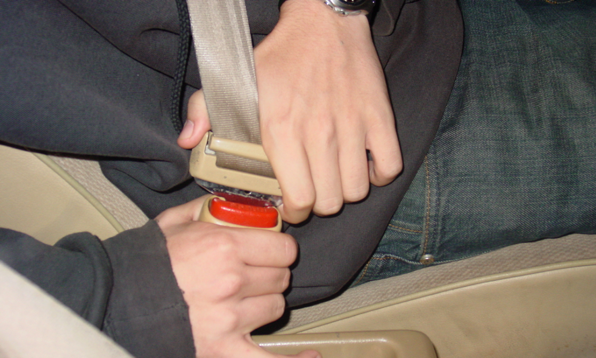Introduction:

Image: wheelsadviser.com
Fasten your literary seat belts, dear readers, as we embark on a crucial mission to tame the dreaded seat belt that dares to defy retraction. We’ll delve into the automotive intricacies and unravel the secrets to restore this vital safety feature in all its retracting glory. Whether you’re a seasoned mechanic or a novice with a wrench, prepare to become a seat belt whisperer by the end of this comprehensive journey.
Seat belts, the unsung heroes of every vehicle, play a pivotal role in safeguarding our lives on the road. However, even these loyal companions can fall prey to mechanical gremlins, causing them to lock up and refuse to budge. Fear not, for this guide will empower you with the knowledge and techniques to bring your seat belt back to its fully functioning self.
Understanding the Anatomy of a Seat Belt Retractor
Before we don the mechanic’s cap, let’s take a peek into the inner workings of a seat belt retractor, the unsung hero behind every smooth retraction. This clever device consists of a spring-loaded mechanism that automatically pulls the seat belt back into place once unbuckled. It’s a delicate balance of tension and release, ensuring both our safety and convenience.
Uncovering the Common Culprits of Seat Belt Malfunctions:
Now that we’re familiar with the seat belt retractor’s intricate dance, let’s unveil the usual suspects that can cause it to falter:
a. Dirt and Debris: Over time, a buildup of dirt, dust, and other unwelcome visitors can infiltrate the retractor, hindering its smooth operation.
b. Wear and Tear: Just like our own bodies, seat belt retractors are subject to the relentless march of time and use. With countless retractions and releases, components can wear down, affecting performance.
c. Damaged Springs: The heart of the retractor, the spring, can succumb to metal fatigue or breakage, leading to retraction failure.
Knowing these common foes, we’re now ready to embark on our journey to seat belt restoration.
Tools for Triumph: Equipping Yourself for Success:
Before we roll up our sleeves and dive into the hands-on repairs, let’s gather the tools that will be our trusty companions on this mission:
· Screwdriver set (Phillips and flathead)
· Torx wrench set
· Socket wrench set
· Needle-nose pliers
Optional but highly recommended:
· Flashlight
· Rags/shop towels
Safety Always: Essential Precautions Before You Start:
Remember, safety knows no compromise, so before embarking on any automotive adventure, prioritize these crucial precautions:
· Disconnect the battery: This crucial step ensures the vehicle is powerless during your作業, eliminating any electrical hazards.
· Engage the parking brake: Prevent unwanted vehicle movement and keep your workspace secure.
· Wear safety glasses: Protect your precious peepers from any flying debris or wayward tools.
Now, armed with knowledge, tools, and unwavering safety measures, we’re ready to embark on our seat belt resuscitation mission.
Phase 1: Meticulous Inspection – Unraveling the Retractor’s Secrets:
-
Locate the seat belt retractor: Usually concealed within the vehicle’s pillar or roof, seek out this hidden guardian.
-
Remove the interior trim panel: Armed with your trusty screwdrivers, gently pry off the trim panel covering the retractor, revealing its inner workings.
-
Unbolt the seat belt retractor: Using your socket wrench set, carefully remove the bolts securing the retractor to the vehicle’s frame.
-
Disconnect the electrical connector: Detach any electrical connectors associated with the retractor, but proceed with caution to avoid damaging delicate wires.
Phase 2: Troubleshooting and Repair – Restoring Unimpeded Retraction:
-
Visual inspection: Scour the retractor for any obvious signs of damage or wear. Look for broken springs, jammed gears, or excessive dirt accumulation.
-
Cleaning the retractor: If dirt and debris are the culprits, use compressed air or a vacuum cleaner to cautiously remove the unwelcome guests, restoring cleanliness to the retractor’s inner sanctum.
-
Replacing a damaged spring: Should you discover a broken or weak spring, it’s time to bring in a new

Image: www.safetyrestore.com
How To Fix A Seat Belt That Won’T Retract